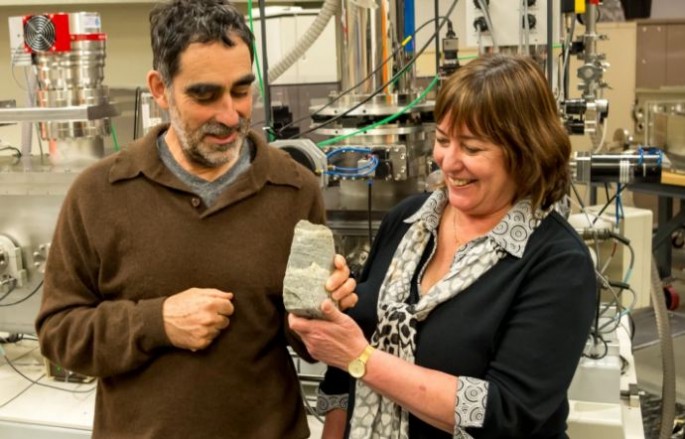A team of Australian and British scientists have discovered fossils of "stromatolites" in Greenland dating back 3.7 billion years ago they claim are the oldest ever found on Earth. They made the discovery in 2012.
Because of the huge implications of this find at the Isua Greenstone Belt in Greenland, the team spent the last four years verifying the results, which the journal, Nature, published on Aug. 31.
Prior to this discovery, the oldest living things on Earth, also stromatolites but found in Western Australia, were dated back to 3.5 billion years ago. The new stromatolite find was discovered in Isua in southwest Greenland where some of the Earth's oldest rocks can be found in the Isua supracrustal belt.
Stromatolites are layers of ancient microorganisms that grow in shallow water. They're layered bio-chemical structures are formed by accretion in shallow water by the trapping, binding and cementation of sedimentary grains by biofilms or microbial mats of microorganisms, especially cyanobacteria. Fossilized stromatolites provide ancient records of life on Earth.
The team announced its discovery in the paper, "Rapid emergence of life shown by discovery of 3,700-million-year-old microbial structures." They said they made their find in July 2012 while doing field research in the remote Isua region.
Allen Nutman, a University of Wollongong geologist, said he and his colleagues were working at the site when they saw some outcroppings they'd never seen before. The formations containing the stromatolites were exposed where the snow pack had melted, a result of global warming.
Lab analysis estimated the formation's age at 3.7 billion years. It also discovered chemical signatures consistent with a biological origin for the conical structures. Scientists determined the age of the rocks through radiometric dating that measured the abundance of elements created by the steady decay of uranium.
There's still the question as to whether this new discovery is indeed the oldest on Earth and if it's an organism and not a rock
The evidence for the Greenland stromatolites "are not as clear cut as you'd ideally want for such an extraordinary claim," believes Abigail Allwood, a geologist at the NASA Jet Propulsion Laboratory who has studied fossil stromatolites.
"They might really be biological but it's hard to absolutely refute the possibility that they formed by localized mineral precipitation from seawater.
"If we found these on Mars, would we plant a flag and declare that we had found life on Mars? I think not, but we would definitely get very excited and continue looking around for more information," she said.



























